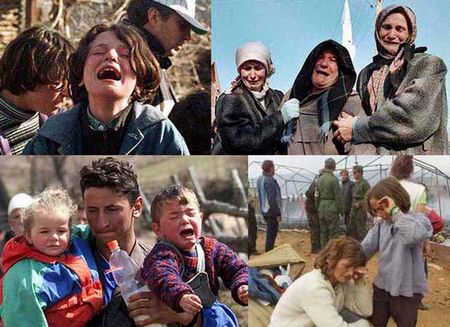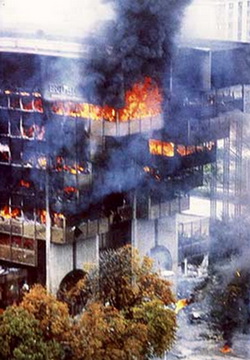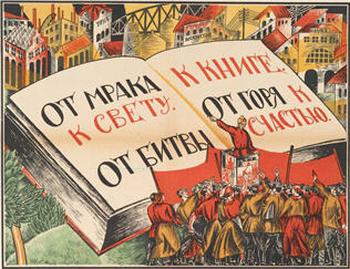There are many reasons to fight a war. It could be over resources or religion. It could be because of politics or power. It’s usually over people wanting a plot of land that someone else seems to want to occupy. One thing remains constant- people love to kill each other. In fact, the only thing people like more than killing each other is attaching nebulous concepts to “why” they are killing each other.
In the case of civil wars, men are even willing to turn against their own countrymen and brothers. Why? Freedom. Bar-b-cue. Baseball. All of them are probably accurate. Nevertheless, as Americans, our barometer for civil war stems from our own experience- the “war of northern aggression.” It may come as a disappointment to some Americans to know that we aren’t even the best at war, our national pastime.
1.
Chinese Civil War, 1927-1936, 1946-1950
There is a certain balance to nature. Some people call it “yin” and “yang”. Those people are called, “hippies” by everyone else. This balance manifests itself with mortal enemies- mongoose and cobra, Autobot and Decepticon, communist and everyone else. In the case of the Chinese Civil War, Chiang Kai-Shek and Mao Zedong fit the latter category. While sounding strangely like Streetfighter characters- these two men represented factions that truly hated each other- the nationalists and the communists, respectively. Both sides were fighting for power and maybe freedom- so they sought to oppress each other as brutally as possible.

In China, pornography is a little different…
In reality, after the final dynasty in China collapsed in 1911 there was a power vacuum. The nationalist Kuomintang party sought to fill the void. Unfortunately, during that time period, communism was like Justin Bieber- everyone wanted a piece of it. Also: lame haircuts. Communist elements in China combined with a split in Chiang Kai-Shek’s party to create a massive rift that spread over all of China.
Once you consider that mainland China is larger than the mainland U.S. – and that the US civil war was primarily fought in the east- you get a picture of the massive scope of this war. Combine this with the shifting frontlines, massive encircling campaigns, modern weapons, a larger population and the scope of the conflict begins to materialize. In total, there were over 3 million deaths… 2 million more than the U.S. Civil War.
Oh, and did we mention that the communists and nationalists put their war on hold so that they could fight a common enemy in the Japanese during World War 2, only to resume their civil war directly after. In total, the Chinese fought continuously for 23 years. Okay China, we get it, you like war.
2.
Yugoslav Wars, 1991-1995
The Balkans must be a depressing place to live. When your leaders aren’t impaling your compatriots’ heads on stakes and vampires aren’t attacking you, you have to deal with Russia. And Hitler. And Genocide.

See the connection? Awful fashion sense. Oh, and deep, soul-crushing misery.
Even before WWI the Balkans, located in Eastern Europe, had been characterized by tens of very proud and very angry ethnic groups. The Austro-Hungarian Empire tried to corral some of these groups during WWI but instead they ended up getting their Archduke shot, which we assume is akin to our Secretary of Imposing Names being assassinated. Because, in the words of Kurt Vonnegut, the world was “not successful in killing itself the first time,” it decided it needed another world war.
WWII rolled around and Hitler decided to re-shuffle the region, forcing Serbs, Croats, Albanians, Macedonians, Bosnians, Slovenes, and Montenegrins to deal with each other. It was kind of like the “Odd Couple”. Unlike “The Odd Couple” however, there weren’t many hi-jinks in the Balkans. For example, a classic prank in the region is taking your friend’s cat, lighting it on fire and extinguishing the flames with your urine.
Hitler set up a puppet government (it was kind of his ‘thing’, just ask France) called “The Independent State of Croatia.” Historians agree that irony was largely lost on Hitler, as the state was neither independent nor only populated by Croats. Next, Hitler decided that he wanted to ethnically cleanse the region of Serbs (also his ‘thing’). Of course, many Serbians weren’t keen on being murdered, so they fought back and remembered how their neighbors had aided in their execution. Eventually Yugoslavia was formed when a communist uprising occurred near the end of WWII. Along with this new nation, the Cold War helped to stabilize the region, mostly because the Soviet Union didn’t really mess around back then.

Intimidation, not the after effects of a Lakers’ win.
But after the Cold War’s ended in 1991, Pandora’s Box of hate was once again opened in the region and all the ethnic groups in the region once again vied for independence. Here is the point where the maelstrom of confusion began… again. At the time it seemed as if virtually everyone was claiming their sovereignty from Yugoslavia, including a group united under the label: Bosnia Herzegovina. Slovenia declared independence, followed by Croatia, followed by the Serbian minority in Croatia. Bosnia was also to be partitioned in the dissolution of Yugoslavia. The Yugoslavian army, which was supposed to oversee all of this, was mostly Serbian. In short: everyone decided to kill whoever was different.
The losers of this conflict (besides everyone) are the women of the area, namely the Muslim Bosnians, who had to grapple with both religious and ethnic differences. The entire conflict had one of the highest incidences of wartime rape ever recorded, including government “rape camps”. Ethnic cleansing and brutality towards women marked the entire conflict with over 20,000 women raped, and over people 100,000 killed.
Keep in mind that nations such as Slovenia have a paltry 2 million people, roughly the size of Baltimore County or the city of Houston.
3.
The Russian Civil War, 1917-1921
While the Chinese Civil war was remarkable for its length, and the Yugoslav Wars were notable for the sheer confusion, the Russian Civil war tops the US Civil War because of its size and deadliness. Russians, it seems, have no qualms with throwing away millions of their own people. In fact, if Russians were dollars, then every one of their wars would represent a hefty signing bonus. They are the New York Yankees of death.

In Soviet Russia, money shows you… a nightmarish scenario.
Imagine that the U.S. Civil War was only started after fighting a World War, and then a bloody revolution. Then imagine that in the subsequent Civil War every western nation wanted a piece of the action. Muddle the whole thing up with factions and political strings and kill over 13 million civilians, and you’re starting to get a picture of the Russian Civil War.
It all started with the Germans drinking Russia’s milkshake in World War I. The Russians withdrew from the war to overthrow the Tsars who were responsible for entangling them in WWI. The Bolsheviks, led by Vladimir Lenin, showed “weakness” when they signed the Treaty of Brest Litovsk which ceded land to Germany. In Russia, land of the bear and the bearded woman, it is never a good idea to show weakness. To compensate for this dive in street cred, the Bolsheviks tried to bulk up the Red Army by expanding conscription. They enforced this by simply killing people if they didn’t join, proving that Russians may have trouble finding creative solutions to problems.
In the end, the Bolsheviks made one too many poor choices and a significant confederation of resistance groups consolidated as the White Movement. At the same time, the Ukrainians wanted their independence and formed the “Green Army” while anarchists around Russia created the “Black Army.” The Red’s, White’s, Green’s and Black’s then fought in what is considered to be the largest game of ‘Risk’ ever.

“Look it says here, ‘Holding Asia gives you 7 armies a turn’.”
The U.S., Great Britain, France, and even the Ottomans all took a few swings at the Red Army, but eventually the Bolsheviks fervor and capacity for attrition proved too much. The Red’s defeated the loose confederation of the White Army after the Whites were weakened by confrontations with the Black and Green armies. In many cases, the lower class populations sprung to the side of the Bolsheviks. They were hastily armed and told simply to defend to the death, as was the case at Petrograd, where the Red Army tripled in size over the course of a few weeks. Some estimates put the death toll over 20 million- a total that would not be topped until the Russians decided to fight again… just 15 years later. This is why we took Russia seriously.







